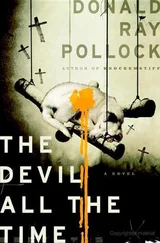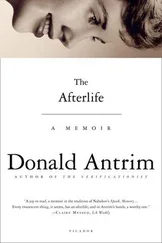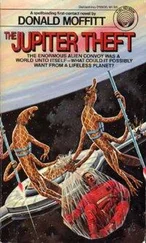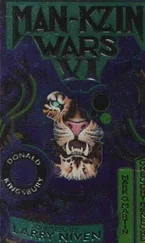Donald Antrim
The Verificationist
INTRODUCTION BY GEORGE SAUNDERS. ARF, WHY DOES THIS GRASS FEEL SO TERRIFIC?
Sometimes, writhing in pleasure on his back, a dog will pause to shoot a glance at his owner, as if to say: “Sorry, master. Just a bit, you know, lost in delight over here.”
Some form of writhing-in-the-grass will, I predict, be your response to The Verificationist, one of the most pleasure-giving, funny, perverse, complicated, addictive novels of the last twenty years. If my reaction is any indication, you will be drawn in immediately, sail through the novel with growing delight, thrilled by Antrim’s audacity, newly reminded that economy of means and largesse of spirit are not mutually exclusive.
But alas, when we humans get as pleasantly subsumed in a work of art as I predict you are about to get, we may, unlike that dog, distrust our pleasure and feel a need to analyze that which has given us pleasure, and, in more depraved cases, even write an introduction to it. Especially if the work generates that pleasure in some new and unexpected way (i.e., is original), we may come out of it feeling a bit … unhinged. Insecure, giddy, adrift— Jeez , we may feel, what just happened to me? How did a description of events that never occurred, and, in this case, could not possibly occur, make me feel so terrifyingly alive?
I SHALL LIVE MY LIFE IN KNICKERS
The Verificationist is a coming-of-age story: a boy strives to become a man. True, this coming-of-age story takes place entirely in one night, in a strange place called the Pancake House & Bar; true, the boy (Tom) is a middle-aged, balding psychoanalyst with a bad back; true, Tom spends most of the book doing something that defies possibility, with the boner of a possible father figure protruding into his back; true, he’s not exactly “striving” to become a man, but doing everything he can to avoid it — still, it’s a coming-of-age story that asks a simple question: Why won’t Tom go home, honor the good, beautiful, patient, apparently lustful woman (Jane) who is his wife, and make a baby with her?
Tom is one of the great louts of American literature. I say “lout,” not “villain” because — well, I like him. I think you will too. He is (yes): reductive, controlling, didactic, easily disgusted (by food, bodies, sex — you name it), blind to his own blessings. He has a tendency to start off praising and end up blaming; dismisses his faults while being hypersensitive to those of others; destroys any moment of genuine connection via a burst of cold, erudite psychoanalytical babble — but we like him, in part because when he blurts out those cruel judgments of his, we often agree with him. (Try this on for size: “Have you ever noticed? — people, no matter how beautiful or desirable, invariably will, if observed closely while going about their daily business of keeping alive, begin to seem like monsters.”)
We like him mostly, of course, because he is our narrator, and it may take the reader awhile to see that Tom is, in fact, exactly what his doofus colleagues keep claiming he is: a selfish man-child who refuses to grow up, who mistakes self-indulgence for spontaneity and thinks that sex (and water-spitting, and toast-throwing, and baby-not-having) will ward off death.
Tom’s story is quintessentially contemporary and, I fear, American: a man has everything but can find nothing in it. Tom is so unworldly — so unacquainted with, terrified of, in denial about death — that he has seemingly dedicated his life to (slyly, without implicating himself) avoiding anything (intimacy, children, honesty) that might force a confrontation with mortality. But this flight is, of late, proving unsustainable. He’s cornered and knows it: can’t live with being an adult, can’t live without it. “The problem is that I don’t know how to be a man,” he manically reflects. “I’m the right age to be a man, but does that make me a man?… Why am I so afraid of children? Why can’t I talk to Jane about a child? Is it because I want to be the child? I want to be the child! I want to be the child!”
Tom, it would seem, does not want to grow up. But Tom also does not want to not grow up.
JANE DOES IT WITH TOM, CAUSING A PAINFUL MIRACLE
Tom’s hand is forced in one of the most beautiful scenes in recent American literature, during which Tom and Jane make love in their possible future baby room. The intensity of their talk, the precise descriptions of the day outside the window, a mysterious moth-chasing cat that moves between and around Tom and Jane as they make love — it is a scene rife with meaning and portent that convinces us that there is a path from Tom’s stunted selfhood to the greater world beyond, and that path is Jane. She makes a heart-stopping speech, passionate and honest, deadly accurate in its diagnosis of their marriage (“You’re a man and I’m not a girl and I’m not who you think I am, you shit”) and, though not a member of Tom’s dismal little psychotherapeutic community, Jane suddenly presents as the most sane, non-narcissistic, fully adult character in the book. Her speech throws Tom and his many deficiencies into harsh relief. ( Run, Jane, run, we feel like saying, this guy is never going to get up to speed, and we know, because we have access to his inner monologues.)
This speech, not surprisingly, causes Tom to panic, and a few nights later, at the Pancake House & Bar, surrounded by his annoying, aggressive, panama hat — wearing, pancake-eating psychoanalytical colleagues, Tom suddenly, to our astonishment, begins to do something truly amazing — but here the introducer runs into a problem. What happens next, transforming this coming-of-age story into something unforgettable, luminous, and iconic, is quite surprising, and also quite impossible. To avoid giving this event away, and thereby ruining the pleasure you will feel when Antrim makes it happen before your eyes, I will refer to it as the impossible activity .
THE FLOOR ON WHICH OUR DANCE OCCURS
The impossible activity begins via a trick of language. It is, Tom tell us, “as if” the impossible activity has started to occur. Tom has “the impression” it is happening. Later, he will describe it as being, possibly, the result of a “transient psychotic breakdown,” a form of “astral projection”—but almost immediately, and for the rest of the book, Tom’s protests notwithstanding, the reader will vividly see Tom engaged in the impossible activity, and soon, Tom performing his activity, though it is impossible, will become as beautifully real to the reader as Huck on his raft, Akaky Akakievich preening in his new overcoat, poor Gregor Samsa wiggling his antennae, late for work.
The Verificationist is in the respected lineage of stories in which, after one allowed violation of natural law, things proceed apace, as they do in ours, and, in this way, we see anew the way things proceed in ours.
On first read, the book presents as a long, spontaneous act of pure invention. That’s how I thought of it anyway: a kind of grand comic yelp, a prolonged victory of imaginative whimsy, a fever dream that produced some of the most acute and funny writing I’d ever read: structureless, free-associative, wild. But on closer investigation, it will be found, The Verificationist (like any good rant — i.e., a rant that fascinates and compels us to keep listening) has been built on a sophisticated and complex structure: the well-made floor that supports the trance-dancers, as it were.
That structure might be described as follows: Tom goes on a twisted version of the classic hero’s journey. He’s trying to get to one place (Jane) but on the way is assaulted by obstacles, most of which are of his own making. To avoid Jane/home/manhood he tries to start a food fight, resuscitate an old affair, initiate a new one (with a teenaged waitress) — but nothing works. Death is coming, still coming, Jane is still at home, waiting to make the baby that will underscore the unbearable fact of Tom’s impermanence.
Читать дальше












